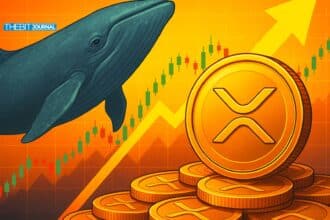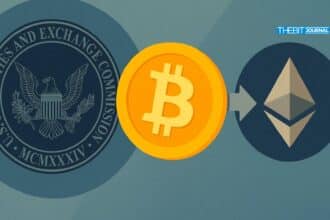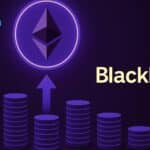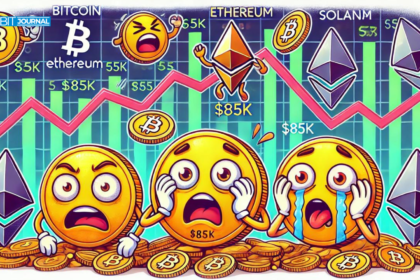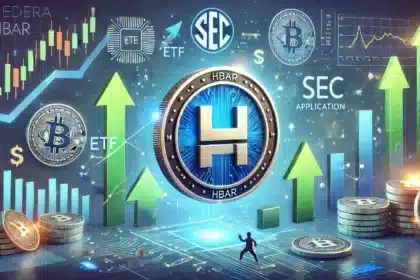Spot Bitcoin exchange-traded funds (ETFs) are outpacing miners at an aggressive rate, amassing nearly six times more Bitcoin than the network produced last week. The surge in accumulation reveals deepening institutional interest in Bitcoin, just weeks after the halving event reduced daily block rewards by half.
According to May 4 data from asset manager HODL15Capital, U.S.-listed spot Bitcoin ETFs absorbed 18,644 BTC between April 28 and May 4. In stark contrast, miners produced just 3,150 BTC during the same timeframe.
ETFs Absorb Supply as Bitcoin Trades Sideways
Despite heightened inflows, Bitcoin’s price has remained relatively stable. On May 2, Bitcoin briefly hit a six-week high of $97,700, however, as at the time of this publication, BTC is settling around $94,000.
Leading the charge is BlackRock’s iShares Bitcoin Trust (IBIT), which has now posted a 17-day inflow streak. Within the past five trading sessions alone, IBIT attracted nearly $2.5 billion in capital, helping push the total assets held by spot Bitcoin ETFs to over $53 billion, according to data from Farside Investors and SoSoValue. Notably, the total net inflow for the week stood at approximately $1.8 billion, despite a rare outflow on April 30.
Nate Geraci, President of the ETF Store, observed in a recent blog post,
“Spot Bitcoin ETFs are operating with one hand tied behind their backs. Many advisors still don’t have access to them. Imagine the scale once those barriers fall.”

Institutional Adoption Strengthens Despite Access Limitations
As of May 3, spot Bitcoin ETFs collectively hold over 840,000 BTC, more than 4% of the total circulating supply. According to Eric Balchunas, senior ETF analyst at Bloomberg, this ETF ecosystem has become one of the most successful category launches in the U.S. financial market’s history.
“The Spot Bitcoin ETF story is not just about flows anymore, it’s about legitimacy and infrastructure,” Balchunas said in a May 2 post on X.
He noted that the IBIT and Fidelity’s FBTC alone are capturing more than half of the weekly inflows, revealing a duopoly forming among the most trusted names.
Meanwhile, data from ApolloSats and HODL15Capital indicates that this accumulation trend is accelerating in the wake of the April halving. Miner supply has been effectively halved from 900 BTC per day to around 450, leaving ETFs to compete over dwindling new issuance.
SEC Prepares Decision on Litecoin ETF as Crypto Pressure Builds
While Bitcoin and Ethereum have already secured their spots in the ETF market, the U.S. Securities and Exchange Commission (SEC) is under growing pressure to expand approvals. By May 5, the agency is expected to issue its second-round decision on a proposed spot Litecoin ETF by Canary Capital.
Though Bloomberg’s James Seyffart noted that a delay is likely, he maintains that Litecoin holds the highest probability of eventual approval among non-Bitcoin ETFs.
In a recent post, Seyffart stated,
“We still believe Litecoin, Solana, and XRP are the top candidates, with 90%, 90%, and 85% approval likelihoods respectively, but delays remain the more realistic short-term outcome.”
Currently, over 70 crypto-related ETF filings await decisions at the SEC. Some of these proposals, including those from Hashdex and 21Shares, aim to incorporate staking components, a feature already implemented in jurisdictions such as Canada and Switzerland.

Industry Push for Staking Clarity Intensifies
Just recently, the Crypto Council for Innovation, backed by firms like a16zcrypto, Consensys, and Kraken, submitted a letter to SEC Commissioner Hester Peirce. The coalition argued for clear regulatory guidance on staking services, urging the SEC to recognize staking as a technical service, not a securities transaction.
“Staking is infrastructure, not an investment contract,” the letter stated. The Council emphasized that clarity on this matter would pave the way for more advanced ETF structures in the U.S., aligning it with global trends.
Conclusion: Post-Halving Era Changes the Game
Analysts warn that the post-halving dynamics are unlike previous cycles. With ETFs absorbing more supply than miners produce, any sustained demand could dramatically tighten the market.
The presence of institutional ETFs changes the speed and intensity of market movements, If retail demand returns in full swing while ETF flows remain steady, we could see structural price shifts, not just speculative ones.
Meanwhile, the SEC’s next decisions on Litecoin, XRP, and staking-related ETFs could usher in another wave of transformation, making this ETF race one of the defining battlegrounds of crypto’s mainstream evolution.
FAQs
How many BTC did spot Bitcoin ETFs acquire last week?
They acquired 18,644 BTC between April 28 and May 4, according to HODL15Capital.
How many BTC were mined in the same week?
Only 3,150 BTC were produced due to post-halving output cuts, around 450 per day.
What is the current value of assets held by spot Bitcoin ETFs?
As of early May 2025, these ETFs manage over $53 billion in Bitcoin assets.
What is the likelihood of a Litecoin ETF approval?
Analysts at Bloomberg estimate a 90% chance, though a delay is still expected in the short term.
What are the main concerns around staking and ETFs?
The SEC has yet to approve any staking-enabled ETF products. Industry players are urging clarity, arguing that staking should be seen as infrastructure rather than an investment security.
Glossary
Spot Bitcoin ETFs: An exchange-traded fund that holds actual Bitcoin, allowing investors exposure to BTC without owning the asset directly.
Halving: A programmed event in Bitcoin’s code that cuts miner rewards in half every four years to reduce inflation.
Staking: A method of earning rewards by locking up crypto assets to support blockchain operations, especially in Proof-of-Stake networks.
Net Inflow: The difference between money entering and leaving an ETF during a specific period.
SEC (Securities and Exchange Commission): The U.S. federal agency responsible for regulating securities markets and protecting investors.

